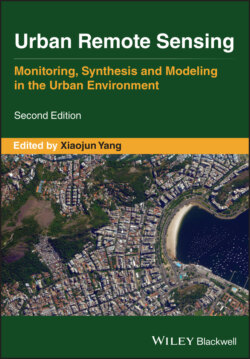Читать книгу Urban Remote Sensing - Группа авторов - Страница 41
2.6 CONCLUSION
ОглавлениеLidar and radar data provide opportunities for remote sensing scientists to model our world, specifically our urban environments, comprehensively in 3D. As this chapter has illustrated, lidar data enables quantification of urban built‐up volume as well as examination of its change over time. Likewise, radar data also facilitates 3D observation of urban environments with the potential to do so over larger areas and with increased temporal frequency. However, more work on advancing our 3D analysis methodologies and incorporation of various 3D data sources is needed moving forward. In sum, for a better understanding of urban form and its morphology (i.e. intensity and configuration of built‐up material), the vertical dimension is incredibly important (Wentz et al. 2018; Dong et al. 2019; Taubenböck et al. 2012, 2019). To improve upon our understanding of urban processes, including how urban built‐up volume influences environmental processes such as air circulation and urban heat island effect, we must think three‐dimensionally.
